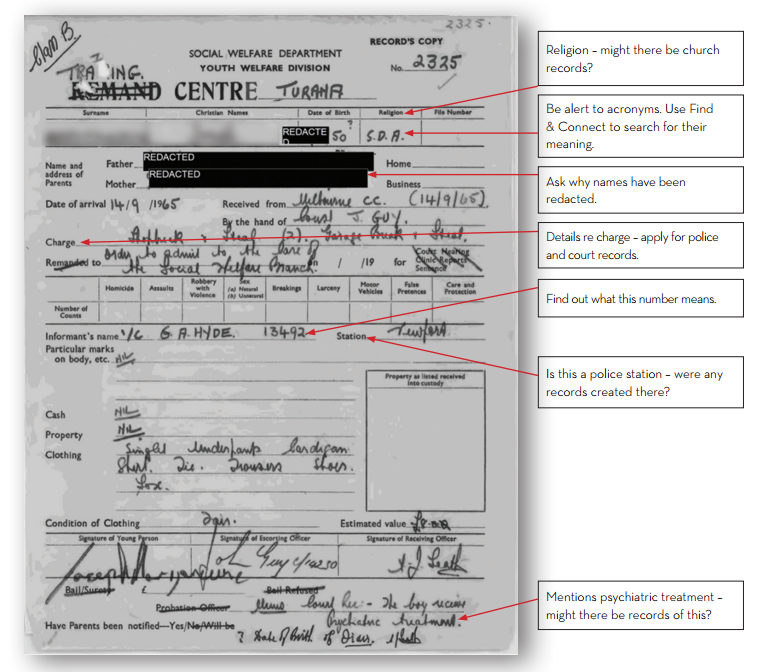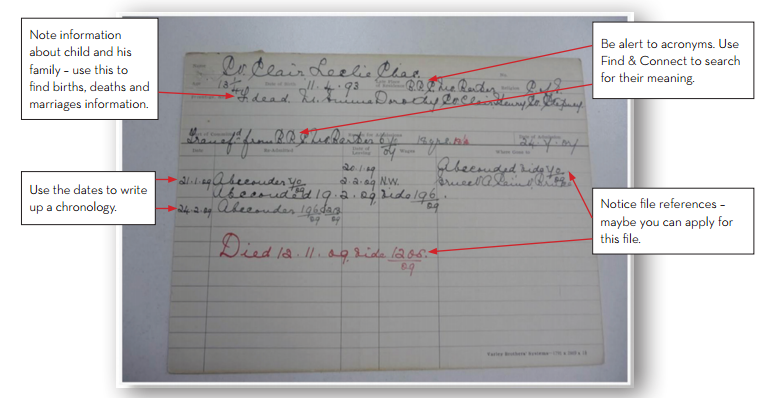Some people may find content on this website distressing.
Read more
Tips for ‘Reading’ Child Welfare Records
Download the Tips for ‘Reading’ Child Welfare Records (7MB PDF).
This is a guide to help support service staff get the best out of child welfare records by becoming more familiar with them. A wide range of types of records were created by various government and non government welfare organisations at different times in different jurisdictions. Gather some context and develop your understanding of why they were created, what they were used for and what kinds of information they can include. If you can closely ‘read’ records, you can often find keys to other files or documents you might be able to ask about and apply for access to. Below are some examples.
Record of transfer of a child to Turana Training Centre, 1965
– ‘Remand Centre Turana record no 2325’, Exhibit for Case Study 30, August 2015, Melbourne, URL: v (accessed July 2023)

South Australian State Ward Index Card, 1907-1909 – courtesy State Records of SA
– courtesy State Records of SA

Reading Records – Some Points to Remember
- Government files tend to be created in ‘reverse date order’ and should be read from back to front. Each new folio or document page was placed on a file on top of the previous one, so that the oldest document is at the back, and the newest at the front of the file.
- Request that all documents are copied with file covers and full references so you know what the record you have is.
- Go to the State & National Archives records’ descriptions, or use Find & Connect records’ descriptions to understand who created a record or document and what its purpose was.
- Read between the lines – notice references to other documents, names of people, places, dates and events. Use these keys to apply for further records.
- Note the names of institutions, the names of staff and the name of the department/organisation at the time – these may also hold keys to further information.
- Use the Find & Connect web resource to find out:
- the meanings ‘terms commonly found on records’, including some acronyms
- what legislation was operating at the time the record was created which might help with understanding the document and why certain terms were being used or why certain things happened
- information about the institutions and departments/organisations mentioned in records
- who to contact or where to go to ask for more information and to ask about and apply for files you have identified on records.